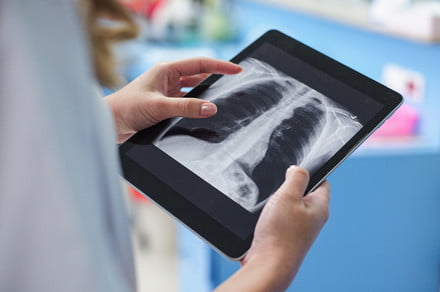There are many pain points when it comes to the coronavirus, officially known as COVID-19. One of them is how exactly to test people for it when the necessary testing kits are in short supply and, according to at least some theories, many more people may have already had it than current estimates suggest.
One possible solution could be to allow artificial intelligence to scrutinize chest X-rays of patients’ lungs to spot signs of potential coronavirus-caused lung damage.
That’s the basis for several exciting and promising attempts to develop a neural network that could be used to give a strong indication of whether or not a patient likely has COVID-19. Researchers at Chinese medical company Infervision recently teamed up with Wuhan Tongji Hospital in China to develop a COVID-19 diagnostic tool. It is reportedly now being used as a screening tool at the Campus Bio-Medico University Hospital in Rome, Italy.
Meanwhile, other researchers from the University of Waterloo in Ontario, Canada, and Canadian A.I. firm DarwinAI this week announced a new open-access neural net that’s open to the public. Called COVID-Net, it’s intended as a tool that could be used for similar screening — and is open for further testing by researchers around the world, who may soon be able to deploy it as a much-needed public health solution.
“We carried [out the A.I.’s] training on a dataset made up of 5,941 posteroanterior chest radiography images, across 2,839 patient cases, from two-open access data repositories,” Alexander Wong, one of the researchers on the project, told Digital Trends. “So far, the sensitivity to COVID-19 cases is quite good. However, the data on COVID-19 cases is still limited and we are continuing to improve the COVID-Net model as more data comes in over time.”
This is the problem that any A.I. researchers are likely to run into. Simply put, there’s still much to learn about COVID-19, which can make developing tools for recognizing it (and, in this case, distinguishing it from other maladies of the lung) difficult. That is why the idea of a publicly available — and publicly scrutable — system is so promising.
“[COVID-Net] is currently not used by patients,” Wong said. “But we are continuing to work hard on improving the results, and invite clinicians and clinical institutes and organizations to use it, give feedback, [and] contribute data so we can accelerate its readiness for clinical deployment. Right now, everything is available to the global community, so hopefully this accelerates progress and advances in this area.”
A.I. researchers are always talking about wanting to solve big problems. Right now, this is one of the biggest that there is.

